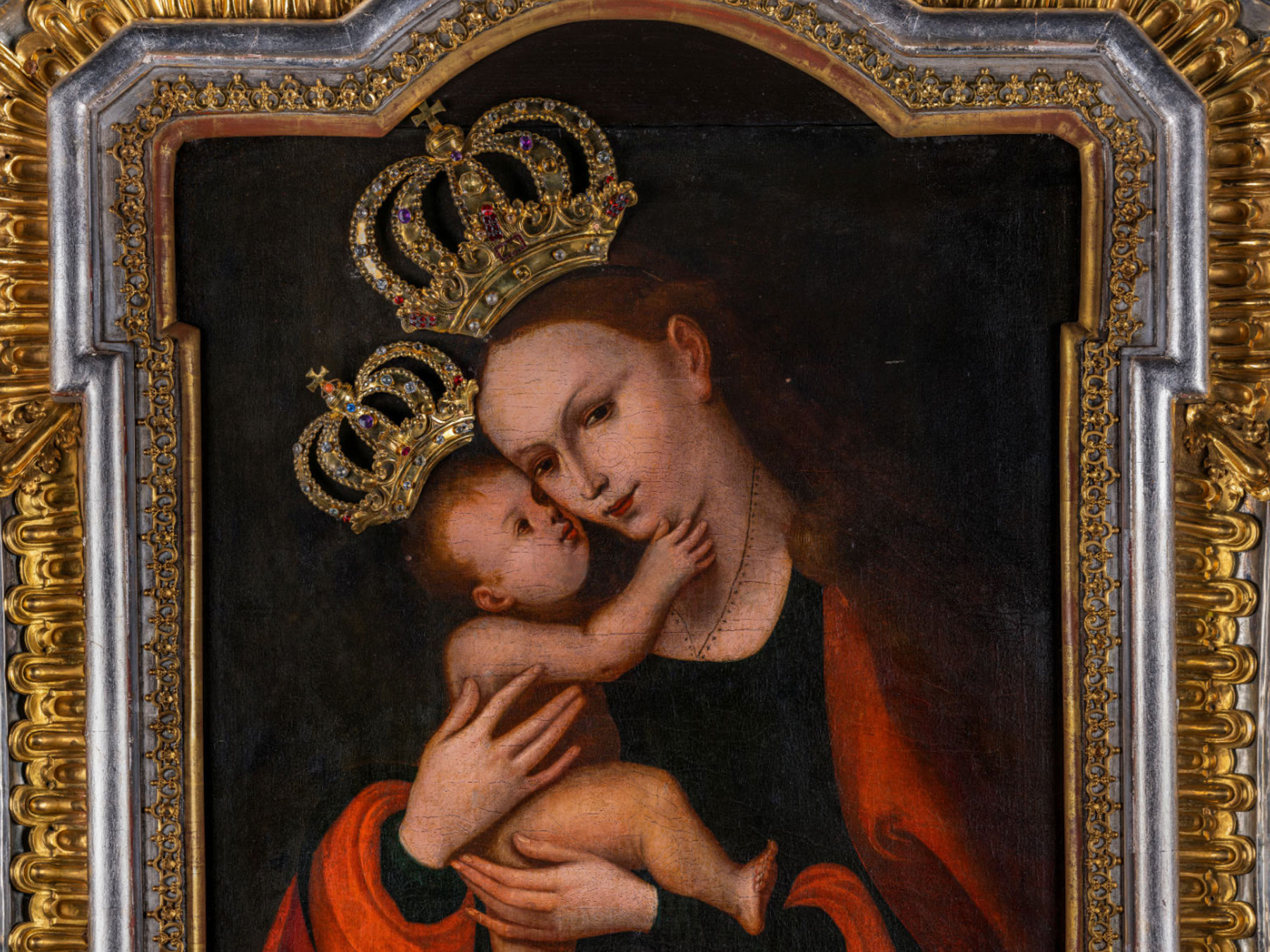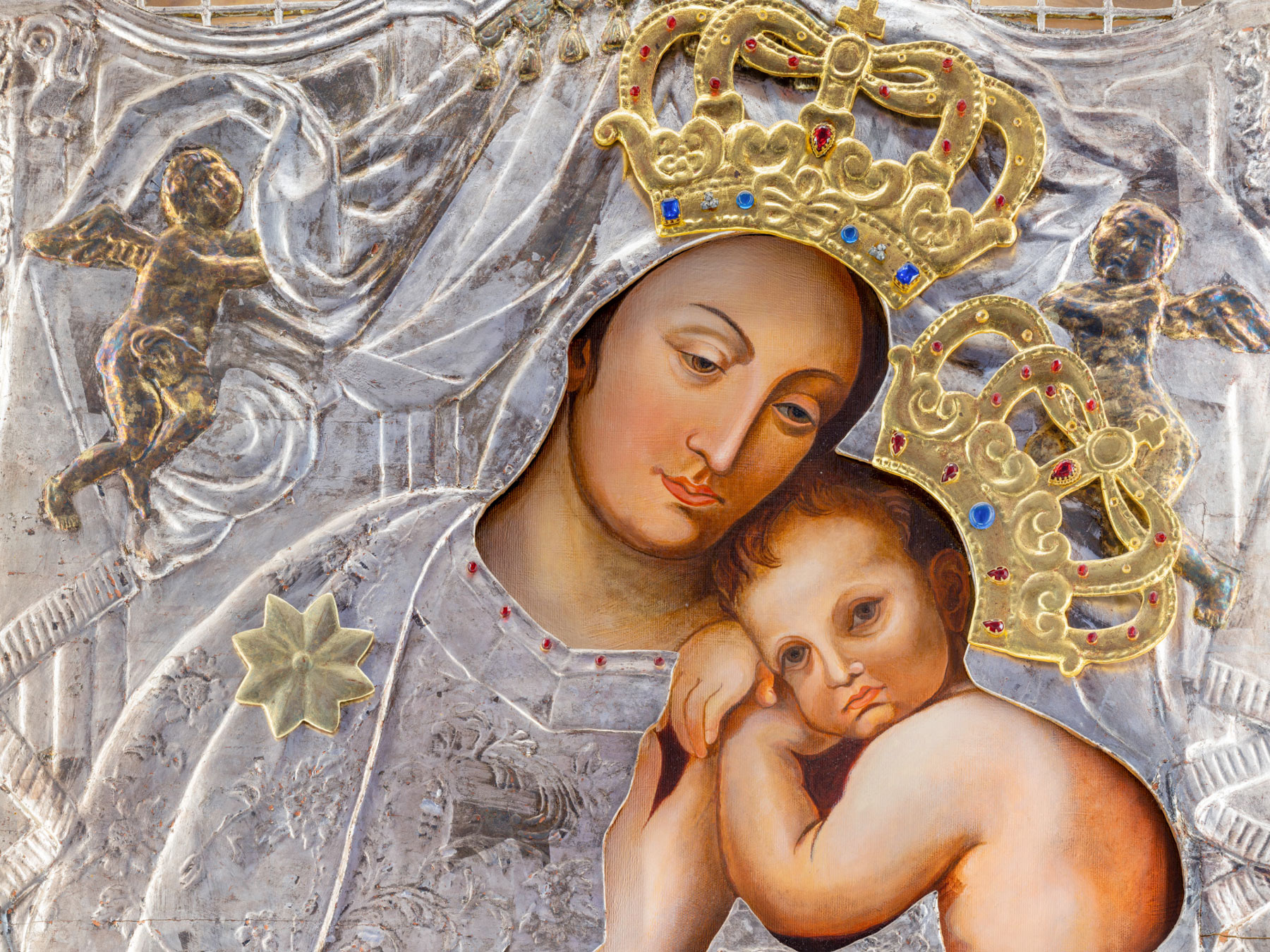Crucifixion
The painting, painted on board in oil technique, comes from the workshop of Lucas Cranach the Elder (1472-1553), who ranks alongside Albrecht Dürer among the most prominent representatives of the Renaissance in German art.
The painting, unsigned, was undoubtedly created simultaneously with Cranach’s signed „Road to Golgotha”. It can be seen that the two compositions were discussed together, an effort was made to keep the similarity of certain details, but they are not identical. It seems that the two painters worked separately here – it is enough to compare in both works the figures of Mary, John and the women and, for example, the face of Jesus.
Multifaceted scene of the Crucifixion, belonging to the so-called historical type. The painting, shaped like a standing rectangle, depicts a crowded Passion scene. In the foreground, on the left, a group of women with the fainting Virgin Mary and weeping St. John. On the right, in the corner, soldiers playing dice for Jesus’ tunic. In the center, a cross with the outstretched body of Christ, on the sides diagonally arranged crosses of two ruffians. Below the crosses a tight crowd of figures on foot and on horseback dignitaries, soldiers and servants. In the background is a gloomy gray-green sky, against which is cut off sharply the white perisonium of Christ, widely unfurled on both sides of the cross (unfurled perisonium – also a „trademark” of Cranach’s crucifixions). On the body of Christ and the thieves numerous, profusely bleeding, wounds. He is already having his side pierced by a spear, whose bloody blade we see next to him. The red-haired villain on the right is the evil and mocking one. Below him, a knight on a white horse turns toward Jesus, placing his hand over his heart. This is probably the centurion who confessed: „This one is truly the son of God”. Armor and weapons are more detailed here. A different painterly approach betrays some of the faces. Those in „Road to Golgotha” are more schematic, there is more malice, resentment and ugliness in them, while here they are softer, on some we can see reflection. But here too we see mockery. Two onlookers show the Crucified One his tongue, and one of them also shows a fig. The overall color scheme is made up of juxtaposed strong patches of reds, cool greens, yellows, broken by the blue of white.
The painting, from an unknown retable, was located in the church in Sielsk, in the estate of the von Borck family, until 1945. During the war it was hidden in the attic of the rectory, where it remained until 1966. From there it was taken by Rev. Inf. R. Kostynowicz to the cathedral in Kamień Pomorski.
Gigapixels
)
)
)
)
)
)
)
)
)